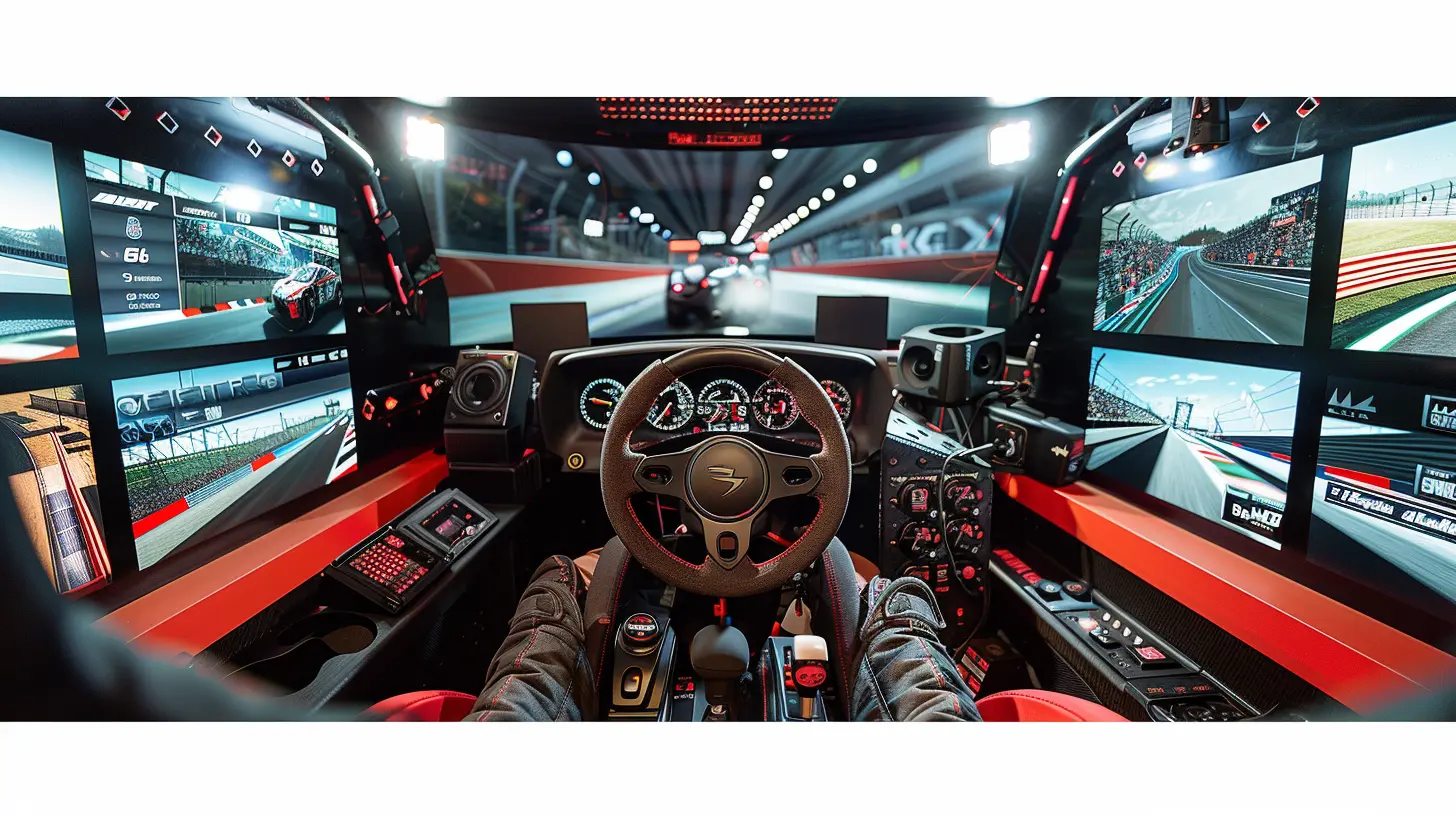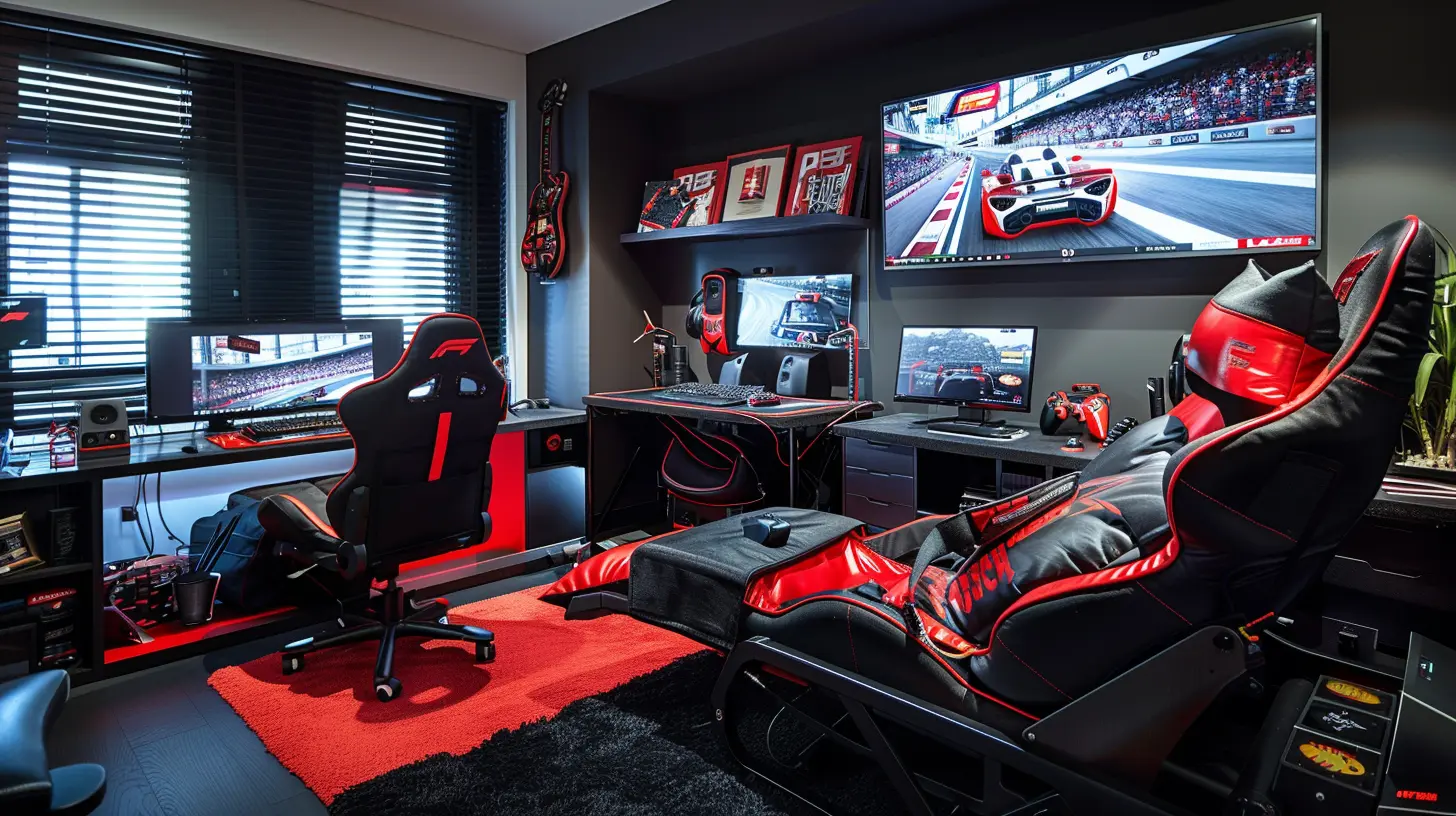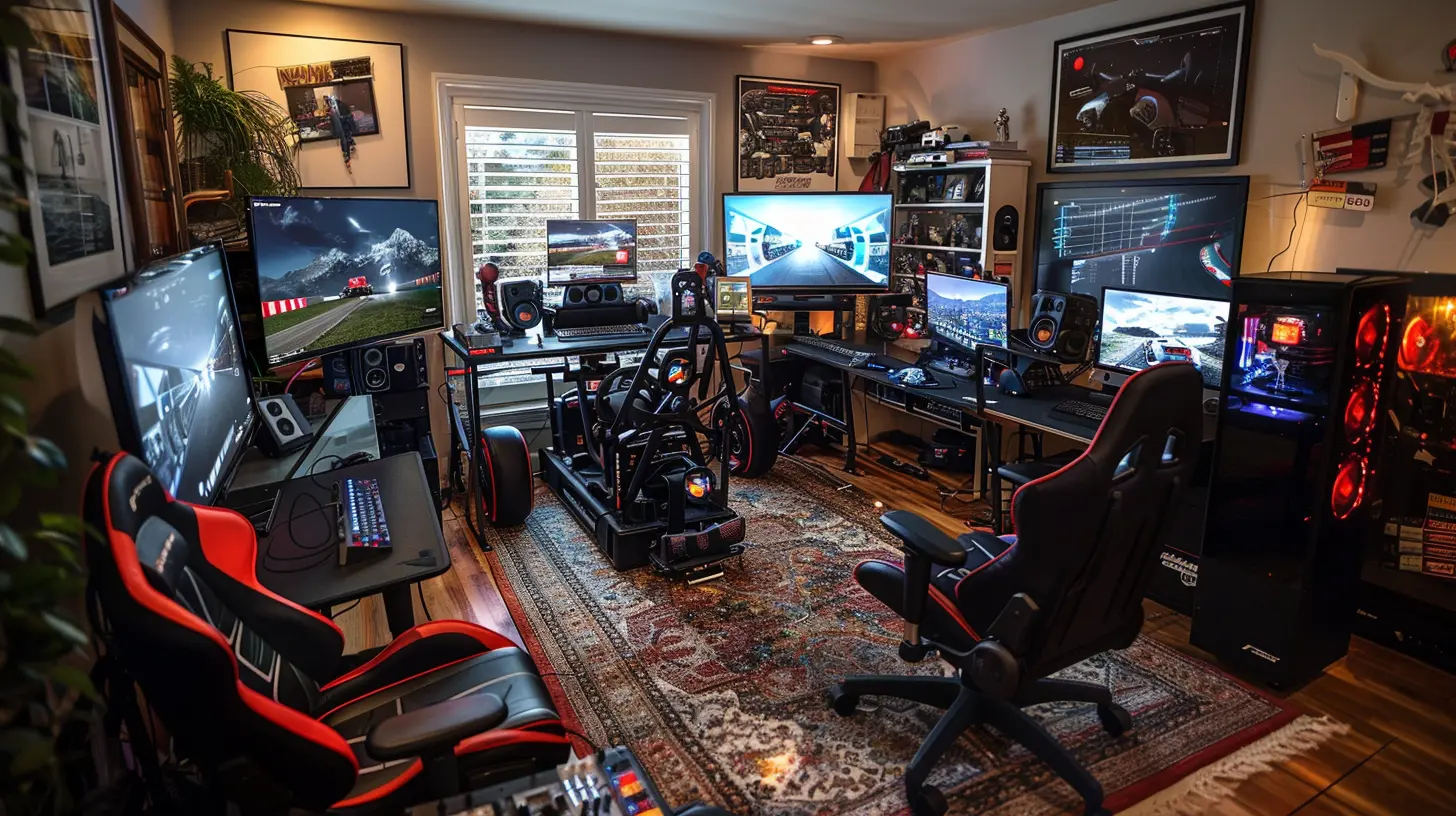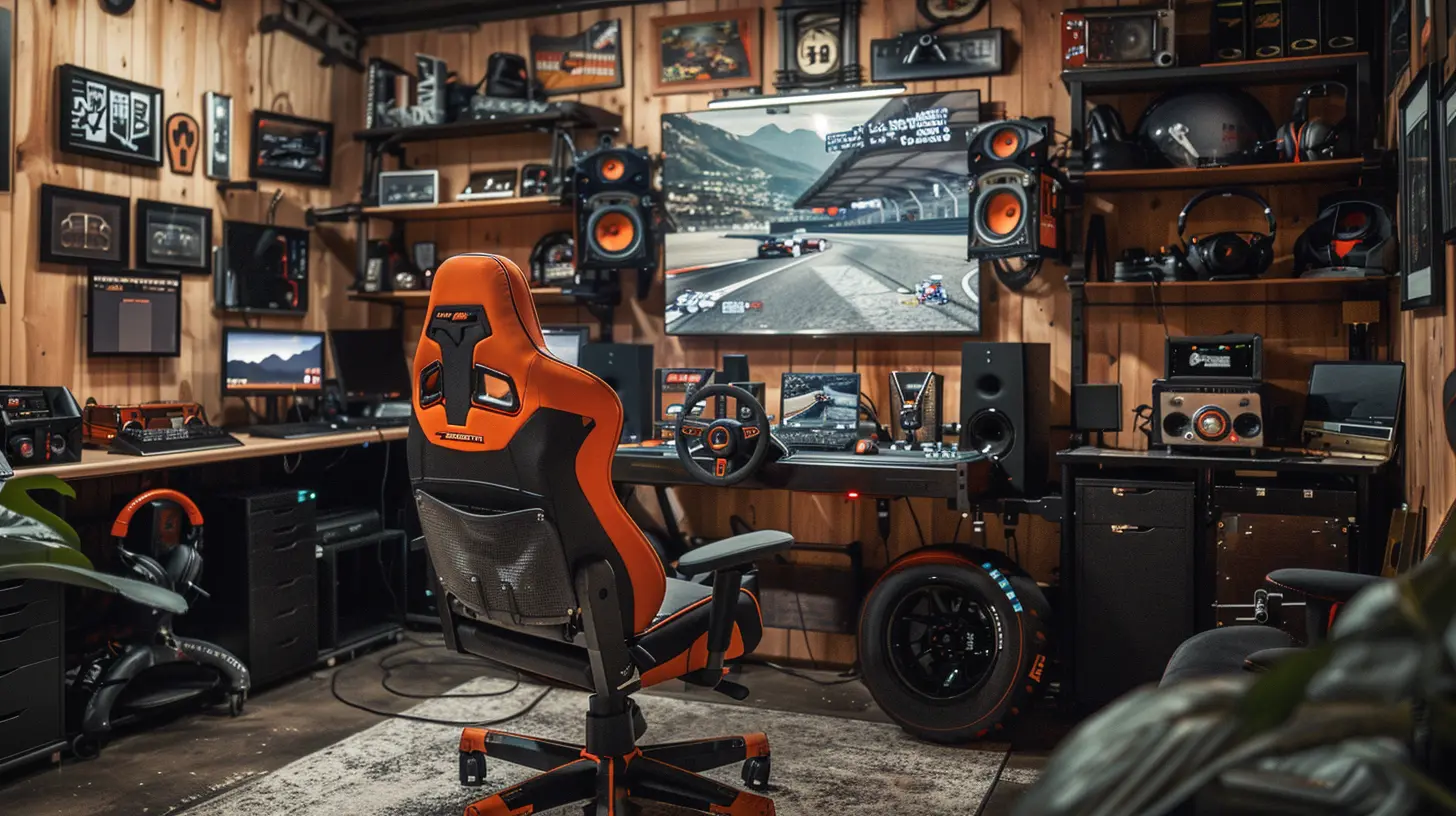How to Create a Home Racing Rig on Any Budget
9 July 2025
Are you a die-hard racing fan who dreams of speeding down the track like Lewis Hamilton or channeling your inner Fast & Furious? Whether you're just dipping your toes into the thrilling world of sim racing or you're ready to go full throttle, having your own home racing rig can make all the difference. But let’s face it: racing rigs can feel as intimidating as trying to parallel park in a monster truck. Don’t worry—I’ve got your back! Here's a step-by-step guide to creating your dream setup, no matter how humble (or hefty) your budget may be. 
Why Build a Home Racing Rig?
Before we dive into the nitty-gritty, let’s talk about why you even need a home racing rig in the first place. Sure, you could use a standard gaming setup, but a proper rig? Oh, that’s a game-changer. It transforms your casual gameplay into an immersive experience. You’ll feel every corner, every drift, and every finish-line sprint. Basically, it turns playing a game into feeling like an actual race car driver.Plus, if you’re serious about improving your lap times or competing online, the precision and immersion offered by a sim racing setup are unmatched. Let’s just say it’s the difference between driving a tricycle and a Ferrari. So, buckle up, and let’s get started! 
The Bare-Bones Budget Setup
Alright, maybe your budget is tighter than a pair of skinny jeans. That’s okay! You don’t need to shell out thousands of dollars to start your sim racing journey. Here’s how you can get up and running without blowing your bank account.1. The Steering Wheel and Pedals
If you’re going budget-friendly, there’s really no need to go all-out just yet. The Logitech G29 or G920 are excellent entry-level choices. They’re sturdy, reliable, and won’t make your wallet sob uncontrollably. You’ll get a decent wheel, pedals with acceptable feedback, and plenty of fun for the price.Another option? Look for a second-hand wheel online! Facebook Marketplace, eBay, or local classifieds can be absolute gold mines for gear at a fraction of the price.
2. The Seat/Lap Stand
Can’t afford a fancy racing cockpit? Grab a sturdy desk chair or even mount your wheel to a table using clamps. Yeah, it's not glamorous, but it gets the job done. Some budget wheels even come with lap clamps, so you can plop the wheel right on your knees. Hey, it’s a bit DIY, but you're still in the race, right?3. The Monitor/TV
If you already have a TV or monitor lying around, congratulations—you’ve just saved a chunk of cash. Anything with an HDMI port will do the trick. For now, focus more on getting into the racing action than worrying about 4K resolutions and ultra-wide screens.Pro Tip: Add a cheap pair of wired headphones or use what you already own for a bit of extra immersion. 
Mid-Range Madness
Got a little extra wiggle room in your budget? Then it’s time to level up! You’ll be surprised how much you can upgrade with just a modest investment.1. A Better Wheel and Pedal Setup
At this price point, you’ve got options. Thrustmaster’s T300 RS or T248 are excellent mid-range wheels. They have smoother force feedback, more precision, and are a noticeable step up from the entry-level stuff.Don’t overlook pedals! Mid-range options often include load cell brakes, giving you a more realistic braking experience. It’s like upgrading from flip-flops to sneakers—it just makes everything feel better.
2. A Dedicated Stand or Frame
If you’re tired of clamping your wheel to the dining room table (and trust me, your family probably is too), invest in a dedicated wheel stand. Something like the GT Omega Wheel Stand is perfect—it doesn’t break the bank, but it adds a ton of stability.Feeling handy? Build your own DIY racing cockpit! A few 2x4s, some screws, and a dash of elbow grease are all you need. Just don’t expect it to look like something out of a car showroom. Function over form, am I right?
3. Upgrading the Visuals
This is where things get exciting. A curved monitor or even a basic ultra-wide display can elevate the immersion factor tenfold. If that’s out of reach right now, dual or triple monitors are a fantastic, affordable DIY alternative.And if you really want to flex? Hook up your rig to your TV for an epic "home-theater racing" vibe. Just don’t forget to pull back the couch—no one likes crashing into the coffee table mid-race. 
The Full-Throttle Setup (For Big Budgets)
Alright, you’re ready to go all-in. Maybe you’ve been saving up, or maybe you’ve got the green light to treat yourself. Either way, it’s time to build the racing rig of your dreams.1. High-End Wheel and Pedals
Say goodbye to mid-range gear and hello to pro-level hardware. Fanatec is the gold standard when it comes to sim racing equipment. Their direct-drive wheels (like the CSL DD or Podium Series) provide unparalleled force feedback and precision.Pair that with a set of high-end pedals like the Fanatec CSL Elite or Heusinkveld Sprint, and you’ll feel every brake, throttle, and clutch input as if you’re in an actual race car.
2. A Full Racing Cockpit
This is where things get real. Brands like Playseat, RSeat, and SimLab offer full racing cockpits that include a seat and a sturdy frame to mount your wheel and pedals. It’s like strapping into a fighter jet, minus the G-forces and crazy flight suits.If you’re a fan of immersion, consider adding a motion platform. These systems simulate the movement of a car, rocking you around as you speed through virtual corners. It’s as close to the real deal as you can get without wearing a helmet.
3. Triple Monitors or VR
Want to feel like you’re inside the cockpit of an actual race car? Invest in a triple monitor setup for an ultra-wide view of the track. Or take things a step further and dive into virtual reality with an Oculus Quest 2, HP Reverb G2, or a similar headset.Combined with top-tier hardware, it’s so realistic that your brain might actually forget you’re not floating at 200 mph on a real race track. (Just don’t lean too hard into those VR corners—we don’t want you falling over.)
4. Immersion Add-Ons
If money’s no issue, go wild with extras:- ButtKickers: These rumble packs attach to your seat and let you feel every bump, rumble strip, and engine rev.
- Sim Racing Gloves and Shoes: You’d be surprised how much these small details add to the experience. Plus, wearing gloves just makes you feel cooler.
Tips for All Budgets
- Don’t Forget Comfort: Whether you’re racing in a rolling office chair or a high-end cockpit, make sure you’re comfortable. Long sessions can take a toll, so invest in cushions, lumbar support, or anything else you need.- Upgrade Gradually: You don’t have to build the perfect rig overnight. Start small and upgrade as your budget allows. Rome wasn’t built in a day, and neither is your racing rig.
- Cable Management Is Your Friend: Trust me, you’ll thank yourself later. Wrangle those wires before they turn into a spaghetti mess. Velcro straps or zip ties work wonders.
Final Lap
Building a home racing rig is a journey, not a sprint. Whether you’re patching together a budget-friendly setup or going full-send on an ultra-luxurious sim racing cockpit, the most important thing is that you’re having fun. After all, what’s the point of racing if you’re not enjoying the ride?So, put on your imaginary helmet, grip your wheel, and get ready to dive into an adrenaline-filled world of high-speed action—right from your living room. Who knows? In a few months, you might just be shaving seconds off your lap times like a pro.
all images in this post were generated using AI tools
Category:
Racing GamesAuthor:

Aurora Sharpe
Discussion
rate this article
2 comments
Casey Bowers
Rev up your passion—race your way home!
November 11, 2025 at 3:46 AM
Samantha Kearns
Great article! It offers practical insights for both beginners and seasoned gamers looking to enhance their racing experience. I particularly appreciate the budget-friendly tips and creative solutions. Racing rigs can be highly customizable, and your suggestions make it accessible for everyone. Happy racing!
July 21, 2025 at 4:45 AM

Aurora Sharpe
Thank you for your positive feedback! I'm glad you found the tips helpful and accessible for all gamers. Happy racing!


